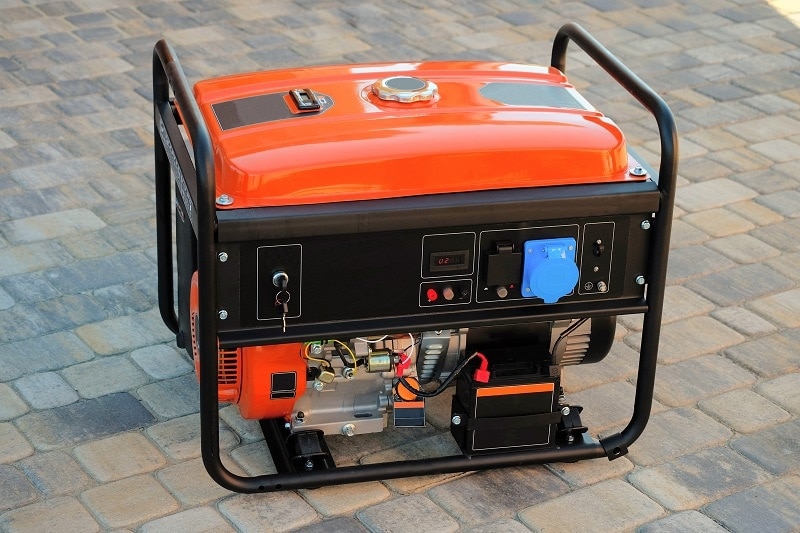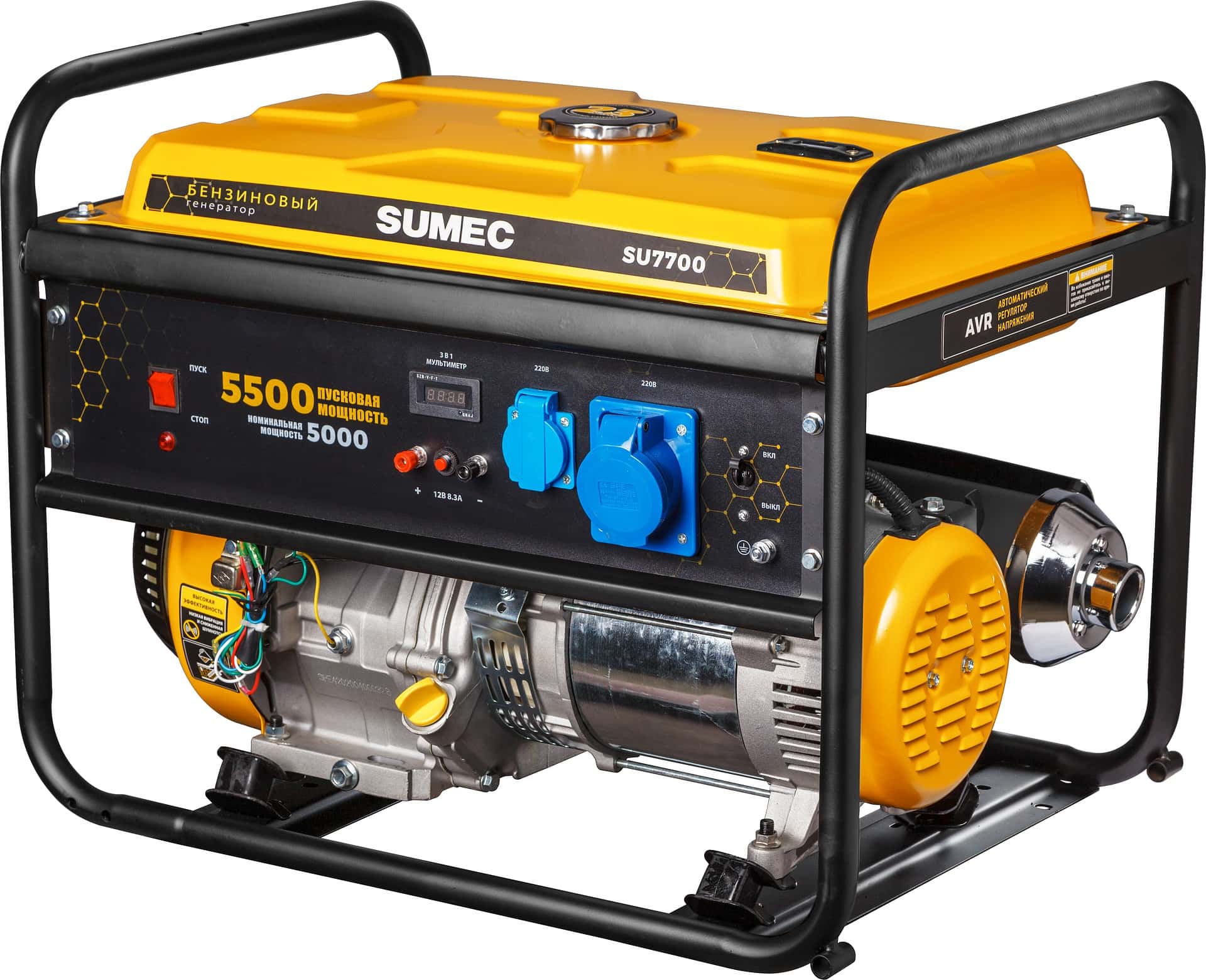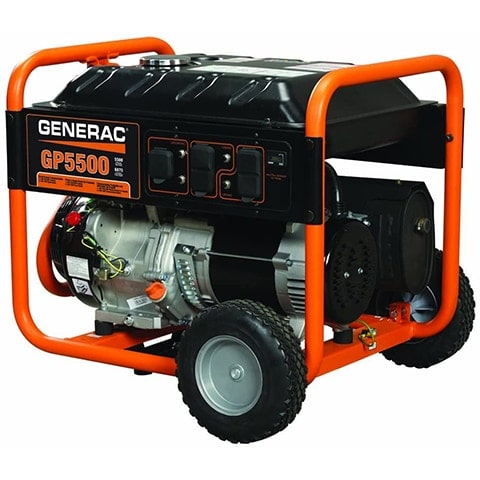CARB-Compliant Generators: What Does it Mean? Is it Important?
-
- Last updated:


If you’re shopping for generators, you might notice that some of them are labeled as CARB-compliant, while others are not. What does it mean to be CARB-compliant? Does that have something to do with food? What do carbs have to do with a generator?
No, CARB doesn’t have anything to do with carbohydrates or food. But a CARB-compliant generator has some key differences that separate it from generators that aren’t. Do you need a CARB-compliant generator, or is there an advantage to generators with this designation? By the end of this article, you’ll have the answers to these questions and more, so you’re prepared to decide what type of generator is right for you.

What is CARB?

CARB is an acronym that stands for California Air Resources Board. It’s a California environmental agency that was created in 1967 by combining the Bureau of Air Sanitation with the California Motor Vehicle Pollution Control Board.
Because of the Federal Air Quality Act that went into effect the same year, California was able to create more stringent standards for their state than those imposed by the federal government. Thus, CARB was born, with the intention of cleaning up California’s air; particularly in the most populated areas.
Since its inception, CARB has grown considerably, and fourteen additional states have adopted the same CARB regulations. These states are Washington, Vermont, Rhode Island, Pennsylvania, Oregon, New York, New Mexico, New Jersey, Massachusetts, Maryland, Maine, Delaware, Connecticut, and Colorado.

What Does CARB Do?
The whole point of CARB is to reduce air pollution in California. They do this by enacting restrictions on emissions that different types of engines can produce. There are several particular emissions that CARB focuses on, with a major goal of reducing SORE emissions, which stands for Small Off-Road Engines. SORE emissions account for approximately ⅕ of all air pollution, making them a major target for regulations. The primary gases that CARB attempts to limit are:
Carbon Monoxide
Many people know that over-exposure to carbon monoxide can kill you, which is why many homes are equipped with carbon monoxide detectors. This emission is the main reason why you can’t run a small engine inside your home or garage, such as a chainsaw or generator. Carbon monoxide is a clear, odorless gas that causes confusion, headaches, dizziness, chest pain, and can even be fatal.
Hydrocarbons
These organic chemical compounds are made up of carbon and hydrogen, and they form the building blocks of petroleum, crude oil, and all fossil fuels. They’re also the cause of smog and ozone pollution at the lowest altitudes.

Carbon Dioxide
This greenhouse gas is exhaled every time you take a breath, but it’s the CO2 from burning fossil fuels that’s damaging to the atmosphere. Carbon dioxide is considered to be one of the prime contributors to global warming.
Nitrogen Oxides
Nitrogen oxides, or NOx, are gases made up of oxygen and nitrogen. There are seven of them in total, including nitrous oxide, more commonly known as laughing gas. Of these seven nitrogen oxides, nitric oxide and nitrogen dioxide are the most common. These gasses contribute to smog and can cause asthma and respiratory infection with long-term exposure.
Particulate Matter
This is any mix of liquid droplets and solid particles and it can be produced by a wide range of different chemicals. Some particulate matter is large enough to see with the naked eye, while others are microscopic. Soot, smoke, dust, and dirt are some of the most common particulates, and they can cause difficulty breathing, coughing, and hazy skies when stirred by the wind.
Sulfur Oxides
Sulfur oxides can cause breathing problems and asthma attacks with short-term exposure, or heart disease and respiratory illness with continued exposure. It’s not just humans who are affected by sulfur oxides; the environment can easily be damaged by this harmful compound when it combines with other chemicals and creates acid rain.
Is CARB Different From the EPA?
You might be asking yourself: but, doesn’t the Environmental Protection Agency take care of emissions regulations? What’s the need for CARB? Are they the same thing?
Well, they do perform pretty similar tasks; creating guidelines for the manufacture and use of combustion engines, but they’re not the same agency. The EPA is a federal agency that oversees emissions regulations for the entire country. But CARB is a California agency, and their regulations only affect the manufacture and use of combustion engines in California and other states that have adopted CARB regulations.
Many CARB and EPA regulations overlap, but in general, CARB regulations tend to be stricter, thanks to the Federal Air Quality Act of 1967 that allows individual states to set more stringent regulations than those set by the federal government.
Because of these differences, many engines that aren’t built in California can’t be legally sold in California. In order for any tool or device with a gas engine to be sold in California, it must be CARB-compliant. But those same engines can be sold in other states without the need for being CARB-compliant, so long as they meet federal EPA regulations.
How Does CARB Limit SORE Emissions?
As we mentioned, one of CARBs main focuses is to reduce emissions from Small Off-Road Engines, which includes the likes of generators. There are three main ways that small engines contribute to air pollution, and CARB seeks to limit all three.
Spillage
When fuel is introduced to the environment, it releases toxic gases, including hydrocarbons. This can happen from spills during fill-ups, leaks, or even spills during use. One of the key innovations intended to limit spillage was updated standards for fuel caps and gas cans.
Evaporative Emissions
When gas evaporates, it releases many emissions into the atmosphere. Gas can evaporate from the fuel tank or the fuel lines. Regulations from CARB mandated a change in materials to prevent such evaporation, as well as the addition of new systems designed to keep gasoline inside of the engine.
Exhaust Emissions
The most obvious emissions from a small engine are the exhaust emissions it expels while it’s running. More efficient machines release fewer emissions. Updates to regulations resulted in improvements in small-engine technology that allowed for cleaner-running small engines.
What’s a CARB-Compliant Generator?
CARB has created specific regulations regarding the number, type, and volume of pollutants that small engines like generators can produce. A CARB-compliant generator meets all of these regulations, which means it produces far fewer emissions than generators that aren’t CARB-compliant. Generally speaking, CARB-compliant generators are considered to be the most environmentally-friendly options on the market.
Are CARB-Compliant Generators Better?
There’s no question that CARB-compliant generators are better for the environment. The question is, are they better for the user? Luckily, the answer is yes.
CARB-compliant generators offer reduced user risk thanks to lower emissions of harmful substances like carbon monoxide. You also have no risk of being fined with a CARB-compliant generator since they’re guaranteed to meet all state requirements. These generators also tend to be built with premium components, which means you’ll be getting a superior product that will last longer than alternatives.
On the other hand, CARB-compliant generators tend to cost more. There are also fewer options for you to pick from since many generators are not CARB-compliant.
- Reduced environmental impact
- Reduced health risks
- No risk of fines
- Built with premium components
- They often cost more
- You have fewer options to choose from

Can You Use a Generator That’s Not CARB Compliant in California?
No. If you get caught using a non-CARB-compliant generator in California or any state that has adopted CARB regulations, you’ll get slapped with a non-compliance fine. These aren’t just little slaps on the wrist either. In 2018 alone, California brought in more than $13 million in fines for CARB non-compliance. If you plan on using a generator in California or any of the 15 total states with CARB regulations, you better play it safe and get a CARB-compliant machine.
How to Know if Your Generator is CARB-Compliant

Hopefully, it’s clear that it’s in your best interest to use a CARB-compliant generator; at least when you’re in a state that follows CARB regulations. But, how are you supposed to know if your generator is CARB-compliant or not?
There are three main ways for you to determine whether or not your generator is CARB-compliant.
Manufacturer’s Website
The most obvious, and likely easiest way to tell if your generator is CARB-compliant is by looking it up on the website of the company that produces it. They’ll list all of the generator’s features, including any guidelines it adheres to. If your generator isn’t advertised as being CARB-compliant on the manufacturer’s website, then it’s probably not.
Retail Listings
If for some reason you can’t find your generator on the manufacturer’s website, you can find it at any retail outlet to get the necessary information. CARB-compliancy will be listed on any advertising for the machine, including the packaging it comes in. If you can’t find it online, try checking the store you purchased it at.
Emissions Label
If you’ve tried searching online and in stores and you can’t find any information on your generator for some reason, then you can get all the information you need from its emissions label. CARB-compliant machines will be labeled “This engine meets U.S. EPA EXH/EVP and California SORE EXH/EVP regs for (year).” If you don’t see this on your generator’s emission label, then it’s not CARB-compliant.

Conclusion
If you don’t live in one of the 15 states with CARB regulations, then you don’t need a CARB-compliant generator. However, it’s still a good idea to get one, just so we can all reduce our impact on the environment. And if you travel with your generator, you better get a CARB-compliant model just to be safe. The fine for using a non-CARB-compliant generator in a CARB regulated state could cost more than your generator did!
Featured image credit: N-sky, Shutterstock
Contents

